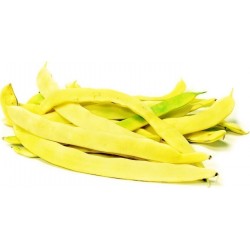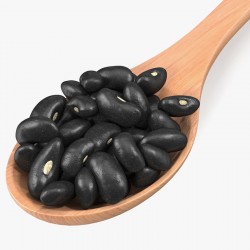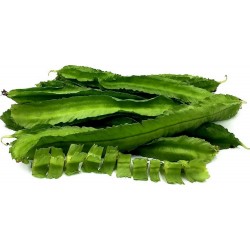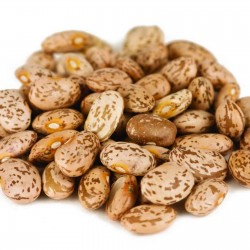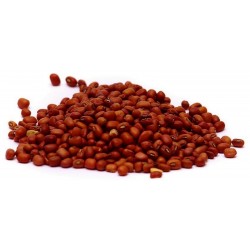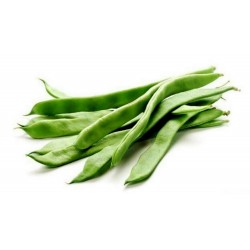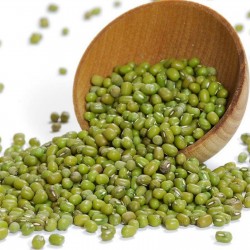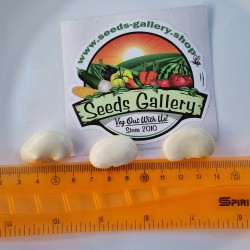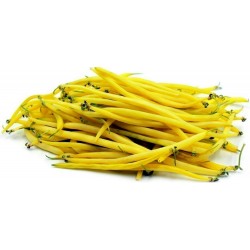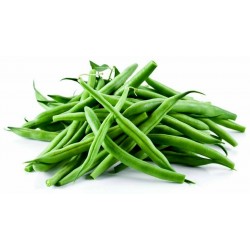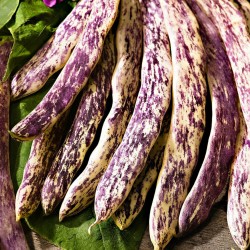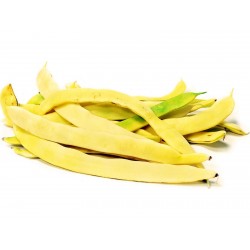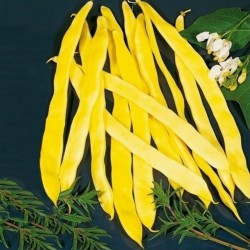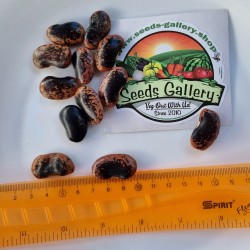
İtalya'dan çeşitli
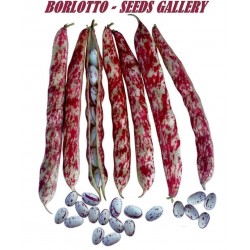
Borlotto Lingua Di Fuoco...
Fiyat
€1,95
(SKU: VE 146 (5.5g))
Seeds Gallery EU,
5/
5
<h2 class=""><strong>Borlotto Lingua Di Fuoco Nano Bean Seeds (dwarf)</strong></h2>
<h2><span style="color: #ff0000;"><strong>Price for Package of 10 seeds.</strong></span></h2>
<p>Borlotto Lingua di Fuoco (traditional Italian variety) sounds more like an opera with aphrodisiac qualities rather than one of the eldest varieties of Borlotto bean.</p>
<p>Lingua di Fuoco literally translates as ‘Tongue of Fire’.</p>
<p>Borlotto Lingua Di Fuoco' is a mid-early Bean, with a long, inflated pod containing seven cream coloured beans. The height of the plant is 45-50 centimetres and the pods themselves have a length of 14-15 cm. The grains are large and easily removed from the pods.</p>
<p>Loved for their excellent flavour, colour and versatility, Borlotto is the most commonly used heritage bean in Italy for cooking, they are basically the Italian version of kidney beans. This dual-purpose variety can be eaten young in the pod either raw or cooked or can be shelled and used as a bean.</p>
<p>The pods look wonderful in the garden and are stunning chopped into salads. Its gorgeous colour is almost whimsical as you break open the pods to retrieve the plump beans inside. With a creamy taste and a soft nutty consistency, it is quite the most beautiful bean in the world.</p>
<p><strong>Where to grow:</strong></p>
<p>Borlotto beans are grown just like runner beans. They prefer to grow in moist, fertile soil in a sunny, sheltered spot away from strong winds. Prepare the soil for planting by digging over and adding plenty of organic material, this will help to improve the soil's moisture-retaining ability and fertility.</p>
<p>Beans can also be grown in pots. Choose pots at least 45cm (18in) in diameter and make sure there are plenty of drainage holes. Fill with a mixture of equal parts loam-based compost and loam-free compost.</p>
<p><strong>Supporting plants:</strong></p>
<p>If you wish to train the plant vertically, create support before planting. Either make a wigwam with canes, lashed together with string at the top, or create a parallel row of canes, which have their tops tightly secured to a horizontal cane. Add to the ornamental appeal of wigwams by planting a few fragrant sweetpeas alongside them. These will twine together as they climb, attracting pollinating insects to the beans, and providing flowers to pick at the same time as the crop</p>
<p>Sowing: Sow indoors late April and May, outdoors in late May to June.</p>
<p>Even when temperatures are not below freezing, cold air can damage bean plants, so don't plant too early. Plant outdoors only after the last frosts, May onwards. Sowing seeds early indoors gives a faster and more reliable germination rate. Beans sown directly outside often germinate poorly or get attacked by slugs.</p>
<p>Avoid problems by sowing seeds in late April and May in pots or root trainers in the greenhouse. Robust young plants will be ready to plant outside within about 5 weeks, growing away far quicker than outdoor sowings.</p>
<p>Sow a single bean seed, 4cm (1.5in) deep, in root trainers or into a 7.5cm (3in) pot filled with multipurpose compost. Water well, label and place on a sunny windowsill to germinate. Seedlings will be ready to plant out after about three weeks. Before planting, put in a cold frame to acclimatise.</p>
<p>Alternatively, beans can be sown directly in the soil between the second half of May and the middle of June. Plant two seeds next to your support about 5cm (2in) deep. Water well. After germination remove the smaller and less robust of the two young plants. As they grow, ensure the plants continue to twine around their canes.</p>
<p><strong>Cultivation:</strong></p>
<p>Having shallow roots regular and plentiful watering is vital. Whilst they will prove drought tolerant, beans should be watered particularly heavily, twice a week in dry weather, both when the flower buds appear and once they're open, ensure maximum pod development. Mulch when conditions are dry.</p>
<p>Don’t hoe around bean plants too deeply or you may damage the roots.</p>
<p>Beans capture nitrogen from the air, so make sure the soil contains the other essential ingredients, phosphorus and potassium. So for the fertiliser use something like 10-20-10. They leave the soil nitrogen-enriched even after harvest</p>
<p><strong>Harvesting: 55 days</strong></p>
<p>Ready for harvesting as green pods after 55 days, or shelling semi-dry after 70 to 80 days. The more you pick, the more they produce. Most should bear pods from late July and cropping of all types can continue until the first frosts, or longer if plants are protected.</p>
<p>Leave the pods on the plant until the shells have changed colour from green to a fully white and red colour. Check that beans inside have turned from green to similar colour to shells. Harvest and shell the beans</p>
<p><strong>Storing:</strong></p>
<p>The beans will store best if you remove the pods, spread them on trays and place them in a warm dry room for a few days to dry out completely before storing them in clean jars in a cool dry place. Discard any that are discoloured or damaged. The beans will then keep for a few years. Check them over periodically to make sure no insects have got in as you would with any store cupboard food.</p>
<p>To cook the dried beans, they will need soaking first, they are best left overnight in a big bowl of water. While the soaking is not strictly necessary, it shortens cooking time and results in more evenly textured beans. In addition, discarding one or more batches of soaking water leaches out hard-to-digest complex sugars that can cause flatulence.</p>
<p>Before using in a recipe, boil the soaked beans for at least 45 minutes, or boil for ten minutes, tip off the water and add fresh water, then bring to the boil again and boil for at least another 30 to 45 minutes. Don’t add salt to these first boilings as it can make the beans rather hard.</p>
<p><strong>Origin:</strong></p>
<p>Phaseolus vulgaris, the common bean, is a herbaceous annual plant domesticated in the ancient Andes and now grown worldwide for its edible bean, popular both dry and as a green bean. The leaf is occasionally used as a leaf vegetable, and the straw is used for fodder.</p>
<p>The common bean is a highly variable species with a long history. Bush varieties form erect bushes 20 to 60cm (8 to 24in) tall, while pole or running varieties form vines 180 to 270cm (6 to 9ft) tall.</p>
<p><strong>Nomenclature:</strong></p>
<p>Borlotto beans are known as Saluggia Beans or Salugia in Piedmontese.</p>
<p>Saluggia is a comune (municipality) in the Province of Vercelli in the Italian region Piedmont, located about 30 km northeast of Turin, it is renowned in Italy and abroad for the production of beans.</p>
<p>In poorer areas of Italy where meat dishes were few and far between, beans were known as 'carne dei poveri’ meaning ‘the meat of the poor’. Funny how times change!</p>
<p>Occasionally they are referred to as cranberry beans, from their mottled cranberry-red and ivory markings.</p>
<p><strong>Translation:</strong></p>
<p>In Italian, Borlotto is the singular form, while Borlotti is plural</p>
<p>Fagiolo means bean, while Fagioli means beans.</p>
<p>Nano means 'dwarf' and is the singular form, while Nani is plural</p><script src="//cdn.public.n1ed.com/G3OMDFLT/widgets.js"></script>
VE 146 (5.5g)





